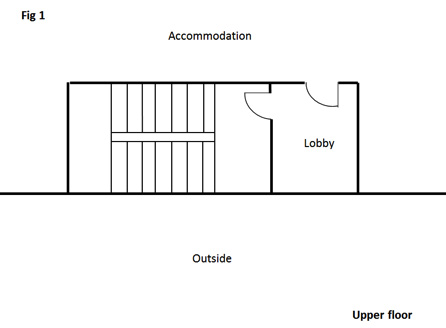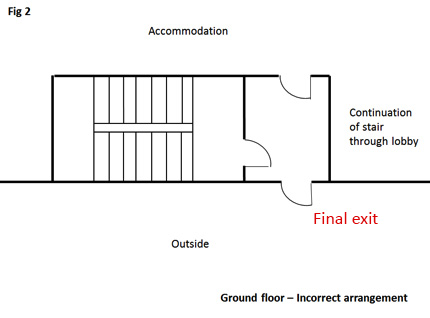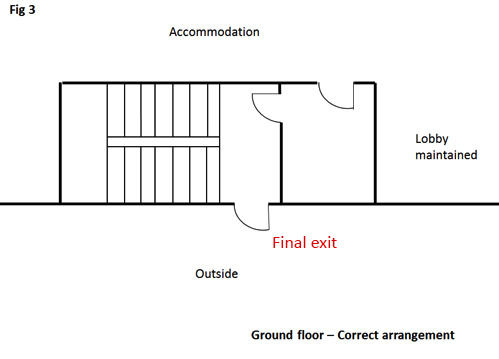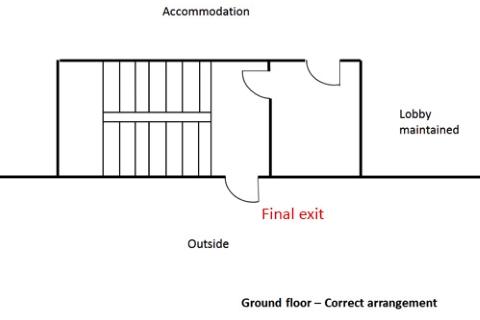A multi-storey building must have sufficient stairway provision to enable its occupants to safely exit the building in the event of a fire.
To this end, the building’s “vertical escape capacity” is calculated to ensure that stair provision is appropriate.
Vertical escape capacity
When calculating the vertical escape capacity of a building with multiple stairways, it is usually assumed that one of the stairways will be unavailable because of the effects of the fire. One of these must therefore be discounted from the calculation to ensure that the capacity of the remaining stairway(s) remain adequate for the number of people needing to escape.
Exceptions
However, fire safety guidance recognises some exceptions to this rule, one being where there is provision of protected lobbies to the stairs. These lobbies should ensure that the stairways are always available during the vertical escape phase of a building evacuation, so removing the need to discount one of them.
This exception assumes that the stairs will be maintained free of smoke by the provision of “two door protection” between the stairway – a place of relative safety – and the building’s accommodation – a place at risk from the fire. The lobby arrangement, including the provision of the fire doors, etc. is not usually problematic on non-ground floor levels. these lobbies provide access to the stairway (either above or below the ground floor level), but not directly to a final exit from the building. An example of this is shown in Figure 1.

Where mistakes happen
It is often the case, however, that where the stairway connects with a ground-floor lobby incorporating a final exit from the building, designers fall foul of a simple and easily correctable mistake.
In Figure 2 the same arrangement of lobby and stairs has been maintained, but a final exit from the lobby to outside the building has been introduced. In this arrangement anyone escaping down the stairs must continue into the lobby before leaving the building via the final exit. At that point – when the stair occupants are in the lobby – the lobby should in fact be considered as a continuation of the stairway and not a lobby to the stair.
Therefore, the escaping occupants using the stairs are no longer separated from the accommodation by the “two door protection” and hence the stairway is no longer provided with a protected lobby.

Where this arrangement is used, the stairway should be discounted when calculating the vertical escape capacity of the building as it is no longer provided with lobby protection at all levels.
A correct stair and lobby arrangement is shown in Figure 3. In this case people from the ground floor merge with people from the stairs within the stairway itself, and the “two door protection” provided by the lobby is maintained.

Other design issues
Designers should also ensure that:
- all door and stair widths are suitable for the people for whom the building is designed to be used
- the door swing arrangements do not clash with one another and do not impeded the exit widths required by stair users
- where relevant, sufficient space is left to provide refuges for disabled people
- all fire doors are appropriately tested and installed to meet the relevant requirements.

